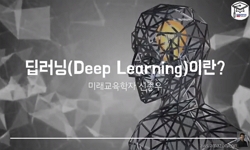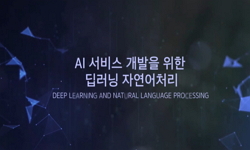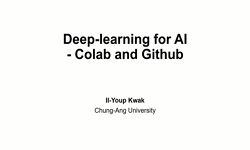4차 산업혁명 시대에서 기술예측은 과학과 경제발전을 효과적으로 연결할 수 있고 다양한 미래 상황에 대비할 수 있다. 객관적인 데이터의 평가를 통한 과학적 근거에 기반한 기술 개발 전...
http://chineseinput.net/에서 pinyin(병음)방식으로 중국어를 변환할 수 있습니다.
변환된 중국어를 복사하여 사용하시면 됩니다.
- 中文 을 입력하시려면 zhongwen을 입력하시고 space를누르시면됩니다.
- 北京 을 입력하시려면 beijing을 입력하시고 space를 누르시면 됩니다.
A study on methodology for trend analysis and technology forecasting using unstructured patent data and natural language processing : focused on case of biopharmaceutical field
한글로보기https://www.riss.kr/link?id=T16386133
- 저자
-
발행사항
포천 : 차의과학대학교 일반대학원, 2022
-
학위논문사항
학위논문(석사) -- 차의과학대학교 일반대학원 , 생명과학과 바이오공학 , 2022. 8
-
발행연도
2022
-
작성언어
영어
- 주제어
-
발행국(도시)
경기도
-
형태사항
26 cm
-
일반주기명
지도교수: 홍수린
-
UCI식별코드
I804:41065-200000638211
- 소장기관
-
0
상세조회 -
0
다운로드
부가정보
국문 초록 (Abstract)
4차 산업혁명 시대에서 기술예측은 과학과 경제발전을 효과적으로 연결할 수 있고 다양한 미래 상황에 대비할 수 있다. 객관적인 데이터의 평가를 통한 과학적 근거에 기반한 기술 개발 전략 및 연구개발 방향을 설정하는 것은 과학 산업분야에서 주요 이슈가 되어 왔다.
현재 대부분의 국가에서 특허 제도가 확립되어 있다. 과학 산업분야의 연구자들은 본 출원공개 제도를 통해 연구와 투자의 중복을 방지하고 효과적인 연구개발 방향을 설정할 수 있다. 특허 데이터는 전 세계적으로 연간 약 3백만 건이 출원되고 있으며 이는 빅 데이터의 성격을 가지고 있다. 특허 데이터의 종류는 정형 데이터와 비정형 데이터가 있다. 특허 데이터는 공백 또는 유망기술을 도출하는 등 기술예측을 위한 데이터 소스로 사용될 수 있다.
기술예측을 위한 다양한 특허분석 방법론이 연구되어 왔다. 출원일, 출원인, 국가 코드, IPC code, CPC code 등의 정형 데이터를 이용한 특허분석 방법론들은 과학 산업의 첨단 기술을 분석하고 의미 있는 연구개발 방향을 제시하기 어렵다는 한계점이 존재한다. 또한, 특허 분석 결과는 산업 분야의 실질적인 니즈와 간극이 존재한다. 이를 극복하기 위해, 제목, 초록, 청구항 등 비정형 특허 데이터를 적극적으로 활용할 수 있는 방법론이 요구된다. 그러나 비정형 특허 데이터는 거대한 텍스트 코퍼스 형태로 존재하기 때문에 활용하기가 쉽지 않다.
이 비정형 특허 데이터를 분석하기 위해 자연어 처리 기법을 이용한 특허 분석 방법론이 제안되고 있다. 딥러닝 기반의 자연어 처리 기법은 기계 학습을 위한 훈련 데이터 세트가 필요하다. 그러나 이 훈련 데이터 세트를 준비하는 것은 어렵고 제공되고 있는 데이터 세트도 제한적이다.
본 연구에서는 산업분야의 실질적인 니즈와의 간극을 최소화하고 비정형 특허 데이터를 체계적으로 분석하기 위한 두 가지 특허 분석 방법론을 제안하였다. 제안된 방법론들을 검증하기 위해, 바이오의약품 분야에 적용하였다. 바이오의약품 분야는 신물질 발굴부터 신약개발까지 높은 투자가치와 고액의 자금과 장기투자가 가능한 지식기반 산업이다. 방법론 적용 결과, 바이오의약품 분야의 특허 데이터를 기반으로 동향 분석이 가능하였고, 공백 및 유망기술을 도출할 수 있었다.
다국어 초록 (Multilingual Abstract)
In the era of 4th industrial revolution, technology forecasting can effectively link science and economic development and prepare for various future situations. Establishing directions for R&D management and strategy for the development of technol...
In the era of 4th industrial revolution, technology forecasting can effectively link science and economic development and prepare for various future situations. Establishing directions for R&D management and strategy for the development of technology based on scientific evidence through the evaluation of objective data has been a major issue in the scientific industry.
Patent systems are now established in most countries. Researchers in the scientific industry can prevent overlapping R&D research and investment and set effective R&D directions through this application disclosure system. Patent data are filed about 3 million annually worldwide, and it has the characteristics of big data. There are two types of patent data: structured data and unstructured data. Patent data can be used as a data source for technology forecasting such as deducing vacant or promising technologies.
Various patent analysis methodologies have been studied for technology forecasting. Patent analysis methodology using structured data such as application date, applicant, country code, IPC code and CPC code has limitations in that it is difficult to analyze advanced technologies in the scientific industry and suggest a meaningful R&D direction. Also, results of patent analysis have gaps with the practical needs of the industry. To overcome this, methodoloeis that can actively utilize unstructured patent data such as title, abstract, and claims is required. However, it is not easy to utilize unstructured patent data due to exist in the form of a big text corpus.
Patent analysis methodologies using natural language processing techniques have been proposed to analyze unstructured patent data. Natural language processing techniques based on deep learning requires a training data set for machine learning. However, it is difficult to prepare this training data set and the provided data set is also limited.
In this study, we proposed two patent analysis methodologies to minimize the gap with practical needs in the industrial field and systematically analyze unstructured patent data. To verify the proposed methodologies, we applied them to the field of biopharmaceuticals. The biopharmaceutical field is a knowledge-based industry with high investment value and a large amount of money and long-term investment from the discovery of new substances to the development of new drugs. As a result of applying methodologies, based on patent data in the field of biopharmaceuticals, trends analysis was possible and vacant and promising technologies could be deduced.
목차 (Table of Contents)
- ACKNOWLEDGEMENTS i
- TABLE OF CONTENTS iii
- LIST OF FIGURES ⅶ
- LIST OF TABLES ⅸ
- ABSTRACT ⅻ
- ACKNOWLEDGEMENTS i
- TABLE OF CONTENTS iii
- LIST OF FIGURES ⅶ
- LIST OF TABLES ⅸ
- ABSTRACT ⅻ
- I. INTRODUCTION 1
- 1. Patent analysis and technology forecasting 1
- 1.1 Purpose of patent system and value of patent data 1
- 1.2 The importance of technology forecasting 4
- 2. Natural language processing 6
- 2.1 Definition of natural language processing 6
- 2.2 Research trends of natural language processing 7
- 3. The biopharmaceutical field and Patent strategies 9
- 4. Patent analysis methodologies for technology forecasting 10
- 5. Limitations 16
- 6. Objectives and Strategies 18
- Ⅱ. DATA ANALYTICAL METHODS 20
- 1. Retro-validation approach for deducing vacant technology using unstructured patent data 20
- 1.1 Methodology design 20
- (1) Finding issue 21
- (2) Evaluating the commercial advancement level of technology fields 21
- (3) Building technology tree and analysis of technology distribution by classifying patent documents 22
- (4) Deducing vacant technology and deriving promising technology through the retro-validation approach 23
- 1.2 Data collection 25
- 2. A novel methodology for identifying technology trends using patent analysis and natural language processing 27
- 2.1 Methodology design 27
- (1) Finding issue and data collection 28
- (2) Building technology tree 28
- (3) Word embedding 29
- (4) Preprocessing input data 31
- (5) Labeling the patent documents according to technology tree nodes 32
- (6) Deep learning using the labeled data 37
- (7) Applying the trained model to unlabeled data and classification of all patent data 38
- (8) Quantitative & Qualitative analysis for identifying technology trends 39
- 2.2 Data collection 41
- Ⅲ. RESULTS AND DISCUSSIONS 42
- 1. Identification and classification of technological issues 42
- 2. Evaluation of commercial advancement level 44
- 3. Building technology trees 47
- 4. Deducing vacant technologies through retro-validation 52
- 4.1 Stem cell therapy 52
- 4.2 Gene therapy 58
- 5. Deriving promising technologies of LCA technologies 61
- 5.1 Stem cell therapy 61
- 5.2 Gene therapy 63
- 6. Predicting future key players of LCA technologies 66
- 6.1 Stem cell therapy 66
- 6.2 Gene therapy 68
- 7. Building technology tree of vaccine therapeutic field 72
- 8. Selecting representative keywords and Extracting similar keywords 74
- 9. Labeling results according to technology tree nodes 77
- 10. Deep learning using transformer and applying the trained model to unlabeled data 79
- 11. Quantitative analysis through technology distribution of vaccine therapeutic field 82
- 12. Establishing main patents selection criteria using structured patent data 85
- 13. Qualitative analysis through main patents for vaccine platforms 87
- 14. Qualitative analysis through main patents for assisted technologies of vaccine therapeutic 93
- 15. Qualitative analysis through main patents for production methods of vaccine therapeutic 96
- IV. CONCLUSIONS 100
- REFERENCE 102
- ABSTRACT IN KOREAN 115












